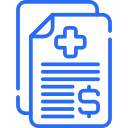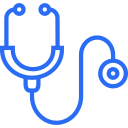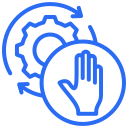Medical Billing FAQs
Understanding Your Medical Bills
Frequently Asked Questions
Skyshine Health Solutions is a medical billing company that simplifies healthcare finances. We specialize in decoding EOBs, clarifying claims, payments, and patient costs with precision, ensuring transparency for providers and patients.
We stay updated with HIPAA regulations, payer policies, and industry standards. Our team undergoes regular training to ensure all claims are processed accurately and securely, protecting your practice and patients.
Turnaround times vary by payer, but Skyshine Health Solutions optimizes the process to submit claims promptly and follow up diligently. Most claims are processed within 30–45 days, depending on the insurance provider.
Yes! We offer seamless integration with most Electronic Health Record (EHR) and Practice Management systems to streamline workflows and ensure data accuracy.
We use encrypted, HIPAA-compliant ICT systems, regular staff training, and audits to protect your electronic Protected Health Information (ePHI), including ICD and CPT codes. Only authorized staff can access your data.
An EOB is a statement from your insurance provider that explains the medical services you received, what the insurance covered, and any remaining balance you may owe. It is not a bill but a summary to help you understand your claim. For more details, visit our EOB Guide.
A claim may be denied if the ICD code doesn’t justify medical necessity or isn’t covered by your plan. We can help review the denial and assist with an appeal. Contact our billing team to start the process.
Yes, we can provide a detailed explanation of CPT codes and their associated services. Submit a request through our patient portal.
We stay current with the latest ICD-10 and CPT code updates to ensure accurate billing. Our RMS automatically integrates these changes, reducing errors in claims.
Complex claims, such as those with multiple ICD or CPT codes, may require additional review by insurers, causing delays. Our RMS tracks these claims, and we’ll notify you of updates via the patient portal or email.
Our Opening hours are Mon - Fri: 9 AM - 5 PM
The term Breakdown of Benefits (BOB) is used to represent the act of checking for co-pays, deductibles, coinsurances (%), or other non-covered amounts that are to be paid to medical practice or physicians by patients.
A deductible is the amount you pay out-of-pocket for healthcare services before your insurance begins to cover costs. If you haven’t met your deductible, your bill may reflect higher out-of-pocket expenses. Our team can explain how your deductible applies to your EOB.
A copay is a fixed amount you pay per visit or service. A deductible is the amount you pay out-of-pocket before insurance kicks in. Coinsurance is the percentage of costs you share after meeting your deductible. Our team can explain how these apply to your bill.
Current Procedural Terminology (CPT) codes are five-digit codes used to describe medical procedures or services, like office visits or lab tests, on your bill. They ensure standardized billing for insurance claims and reimbursements.
The Health Insurance Portability and Accountability Act (HIPAA) sets national standards to protect your personal health information (PHI), including billing records. We comply with HIPAA’s Privacy and Security Rules by using encrypted systems and limiting access to your data to authorized personnel only.
PHI includes any health or billing information that can identify you, such as your name, medical record number, or insurance details. Under HIPAA, we safeguard PHI to ensure your privacy, whether it’s stored electronically or on paper.
A Revenue Management System (RMS) is software we use to streamline billing, track claims, and ensure accurate payments from insurers. It helps reduce errors in your bill and speeds up claim processing, so you receive clear, accurate invoices.
International Classification of Diseases (ICD) codes, such as ICD-10, identify your diagnosis or medical condition (e.g., diabetes or flu). These codes are included on your bill to justify the medical services provided and ensure accurate insurance claims.
ICD codes describe your diagnosis (what condition was treated), while Current Procedural Terminology (CPT) codes describe the procedures or services performed (e.g., tests or surgeries). Both are used together on your bill to provide a complete picture for insurance processing.
Get In Touch With Us For Cost Effective Medical Billing Services
CONTACT FORM
Get Free Consultation












